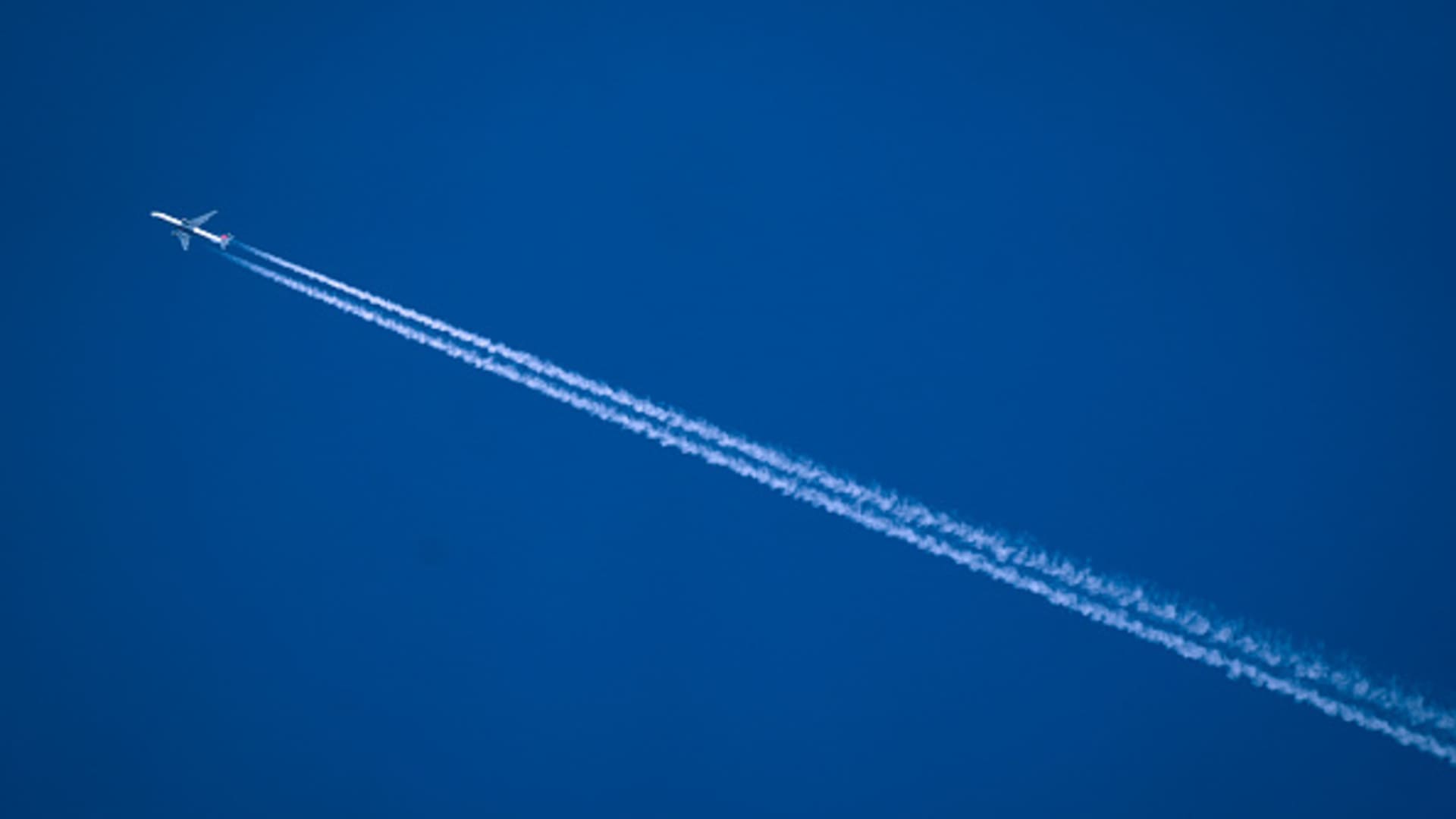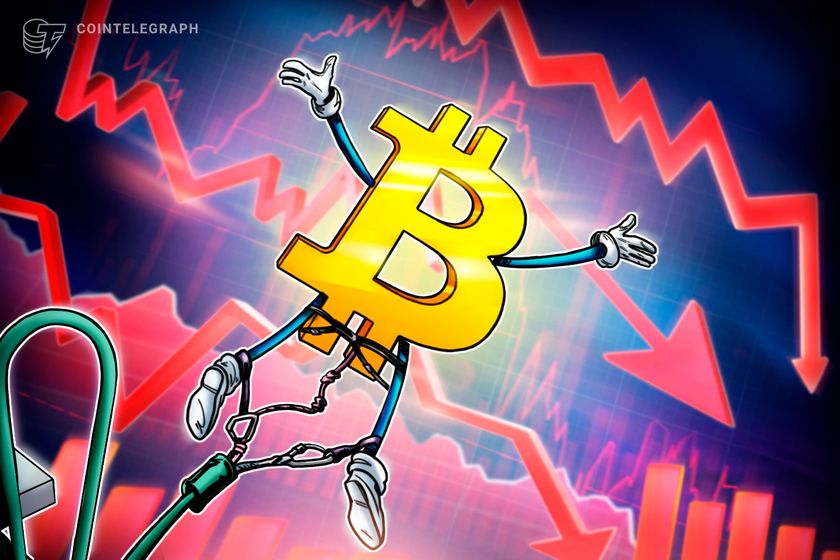A plane flying over Northamptonshire, England. For many, turbulence is an uncomfortable part of air travel.
Joe Giddens – Pa Images | Pa Images | Getty Images
Turbulence during a flight can be an uncomfortable experience for many, ranging from mild bumpiness to more serious instances of damaged airplanes and injured passengers.
With millions of people jetting off on their summer vacations, a recent study from researchers in England provides some challenging, but important, reading.
According to the analysis, which was published in Geophysical Research Letters in June, clear-air turbulence (CAT) became increasingly prevalent in certain parts of the world between 1979 and 2020.
Related to wind shear, clear-air turbulence presents a specific challenge to pilots because it’s tricky to identify ahead of time and can appear without warning.
The World Meteorological Organization, for example, says CAT “often — though not necessarily always — occurs in the absence of cloud, making it difficult to detect visually.”
In an announcement accompanying the report’s release, the University of Reading laid out some of the researchers’ key findings.
“At a typical point over the North Atlantic — one of the world’s busiest flight routes — the total annual duration of severe turbulence increased by 55% from 17.7 hours in 1979 to 27.4 hours in 2020,” it said.
In addition, moderate turbulence jumped from 70.0 to 96.1 hours, while light turbulence hit 546.8 hours, up from 466.5.
The university went on to state that warmer air from carbon dioxide emissions “is increasing windshear in the jet streams, strengthening clear-air turbulence in the North Atlantic and globally.”
The paper’s authors say their research “represents the best evidence yet that CAT has increased over the past four decades, consistent with the expected effects of climate change.”
Aircraft passengers are required to fasten their seatbelt when the sign is illuminated, and advised to keep it secured for the duration of a flight.
Pedrojperez | Istock | Getty Images
Paul Williams, professor of atmospheric science at the University of Reading and co-author of the study, spoke to CNBC and provided some context to the findings.
“[This] doesn’t necessarily mean planes are encountering turbulence, clear air turbulence, 55% more often because, of course, planes try and avoid it and they’ve been getting very good at avoiding it,” he said.
There is, however, “more turbulence in the atmosphere, full stop.”
“I think … it’s hard to believe that there could be 55% more turbulence in the atmosphere and for planes not to be encountering it more,” Williams said. He also made it clear that the report analyzed atmospheric observations rather than directly looking at aircraft measurements of turbulence.
The costs of turbulence
The consequences of severe turbulence vary.
Williams said they could include “internal damage to the aircraft from objects and people … colliding with the insides, usually the ceiling, and more mundanely just routine wear and tear or what engineers call ‘fatigue’ on the aeroplane.”
In a statement issued last month, Mark Prosser, a PhD researcher at the University of Reading and co-author of the study, highlighted the financial implications of turbulence.
“Airlines will need to start thinking about how they will manage the increased turbulence, as it costs the industry $150–500m annually in the USA alone,” he said, referencing a figure on a website related to the NCAR Research Applications Laboratory.
“Every additional minute spent travelling through turbulence increases wear-and-tear on the aircraft, as well as the risk of injuries to passengers and flight attendants,” Prosser added.
How to manage it
What then, can be done to mitigate or manage clear-air turbulence? Among other things, Williams stressed the importance of improving forecasting.
“We need more research into understanding exactly what generates turbulence and how to calculate it,” he said. “I think we should be investing in better turbulence forecasting research.”
When it comes to technology, there’s room for significant developments in the years ahead, even if challenges remain.
“Although the radar on the flight deck can’t see … clear air turbulence, there’s a related technology called LIDAR that stands for light detection and ranging,” Williams said.
LIDAR, Williams explained, operates on the same principles as radar but uses ultraviolet light and lasers instead.
“By using that different wavelength of light, we can see invisible clear air turbulence ahead,” he said.
“They’ve done test flights and it works about … up to 20 miles ahead of the aircraft … [so] you can see it on the screen in the cockpit and put the seatbelt sign on and try and fly around it.”
There’s one big catch, however. “Unfortunately it’s very expensive and also comes in a big heavy box, which you don’t want really to go on a plane to add weight onto the aircraft,” Williams said.
While it’s not being used at the moment, things could change.
“In future, as it presumably becomes miniaturized and the cost comes down and there’s more turbulence in the atmosphere as well, we might see aircraft retrofitted with LIDAR. And that would be a game changer if it happens,” Williams said.
‘Keep your seatbelt fastened’
Is the problem of turbulence going to get worse?
“It’s certainly dependent on our emissions,” Williams said. “Each additional one degree Celsius of warming implies an extra amount of turbulence,” he added.
“To that extent it’s in our control … [because] we can control the warming from our emissions. But, you know, I think … unless we do something drastic, there’s more turbulence on the cards in the coming decades.”
Williams also had some measured words of comfort for flyers who may feel concerned about such an outlook.
“I’m not suggesting that it’s going get so bad that planes will start falling out of the sky or we’ll have to stop flying in certain parts of the world,” he said.
Severe turbulence, he added, is “quite rare — only 0.1% of the atmosphere at 40,000 feet has severe turbulence in it, so if you’re on a plane it’s very unlikely that your plane will hit that 0.1%.”
“However, given the number of planes in the skies, one of them will. But even if turbulence were to treble, it would still just be 0.3% of the atmosphere.”
His advice to passengers is straightforward. “I don’t think there’s a major worry here for passengers.”
“It’s sensible, of course, to keep your seatbelt fastened, just in case you’re unlucky and you do hit that tiny part of the atmosphere that has the turbulence in it.”








